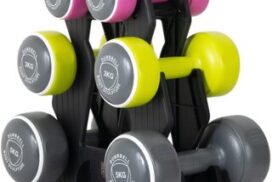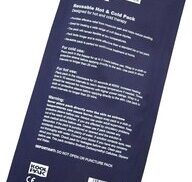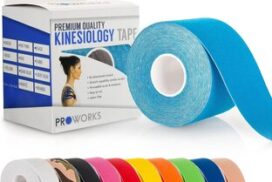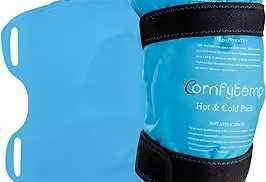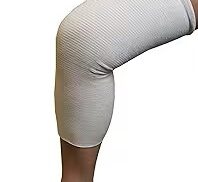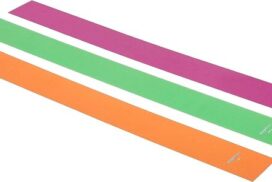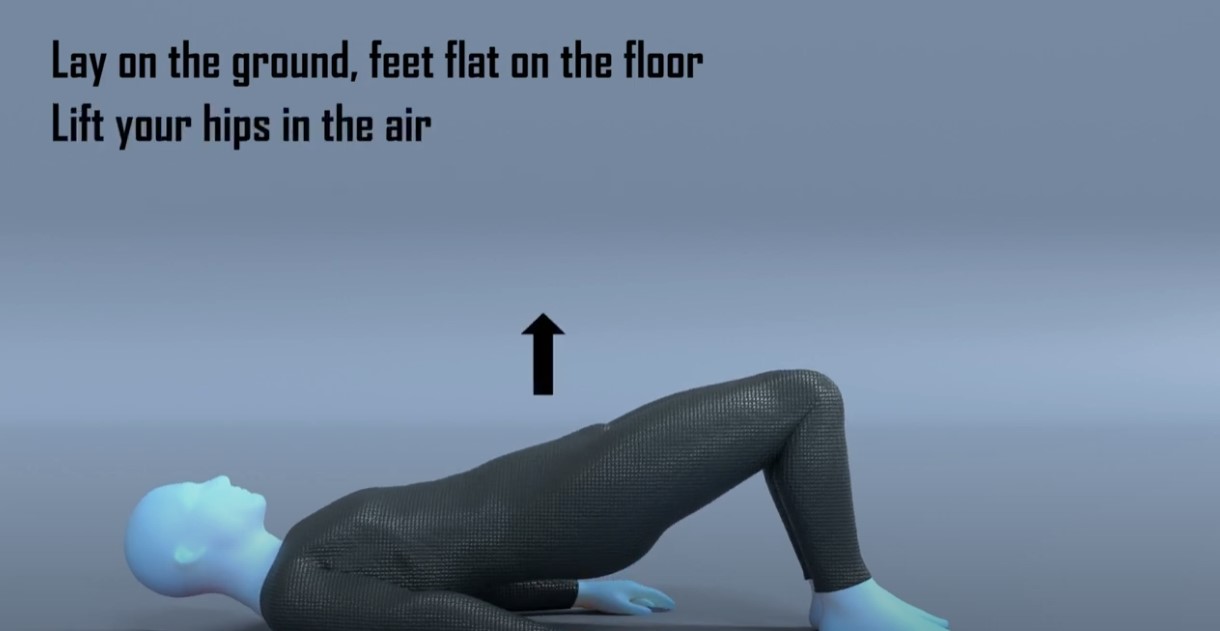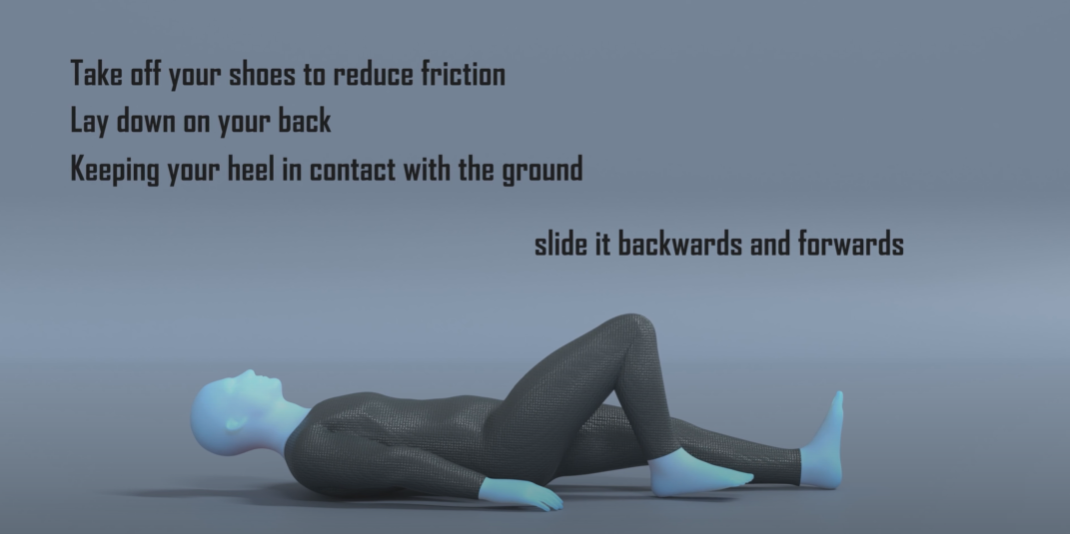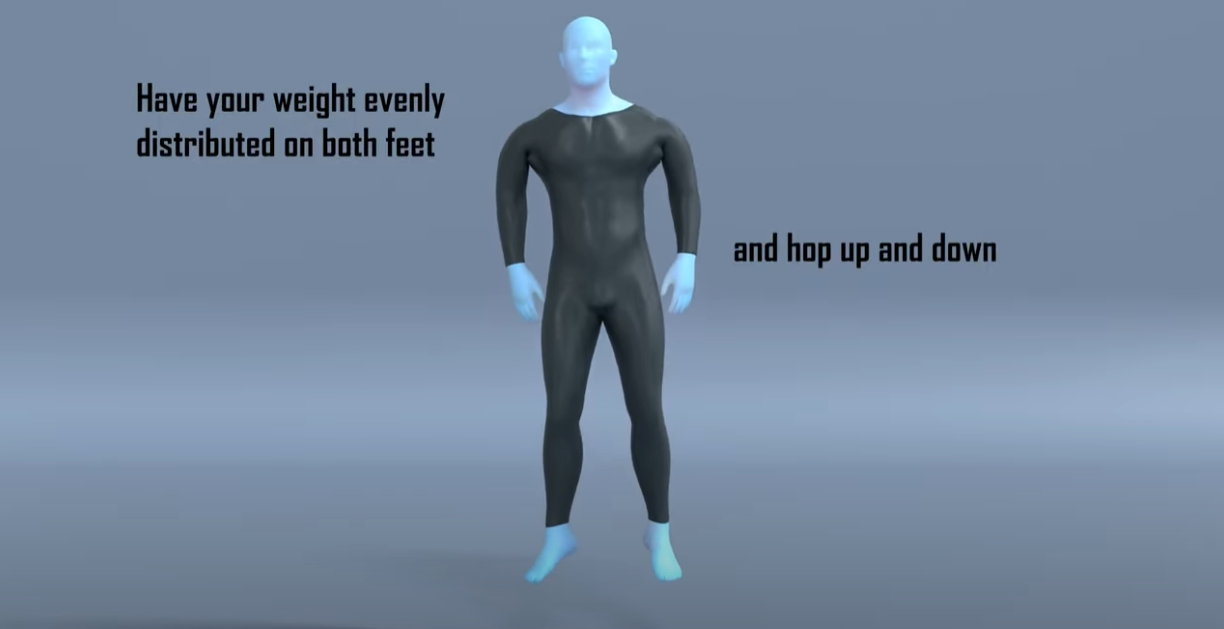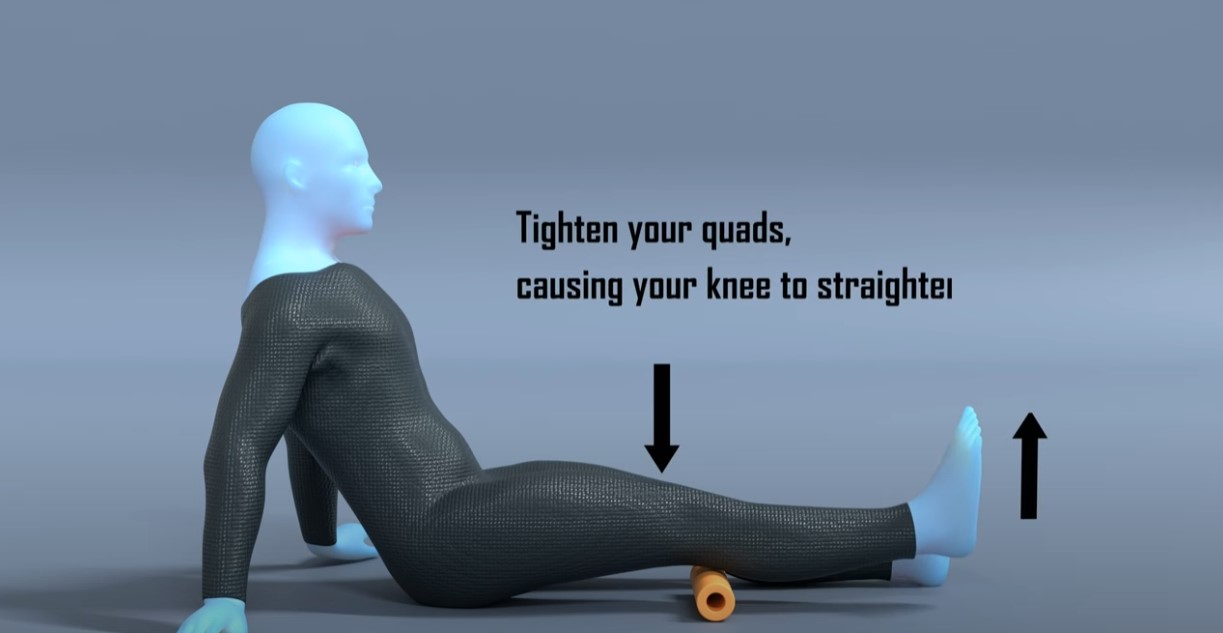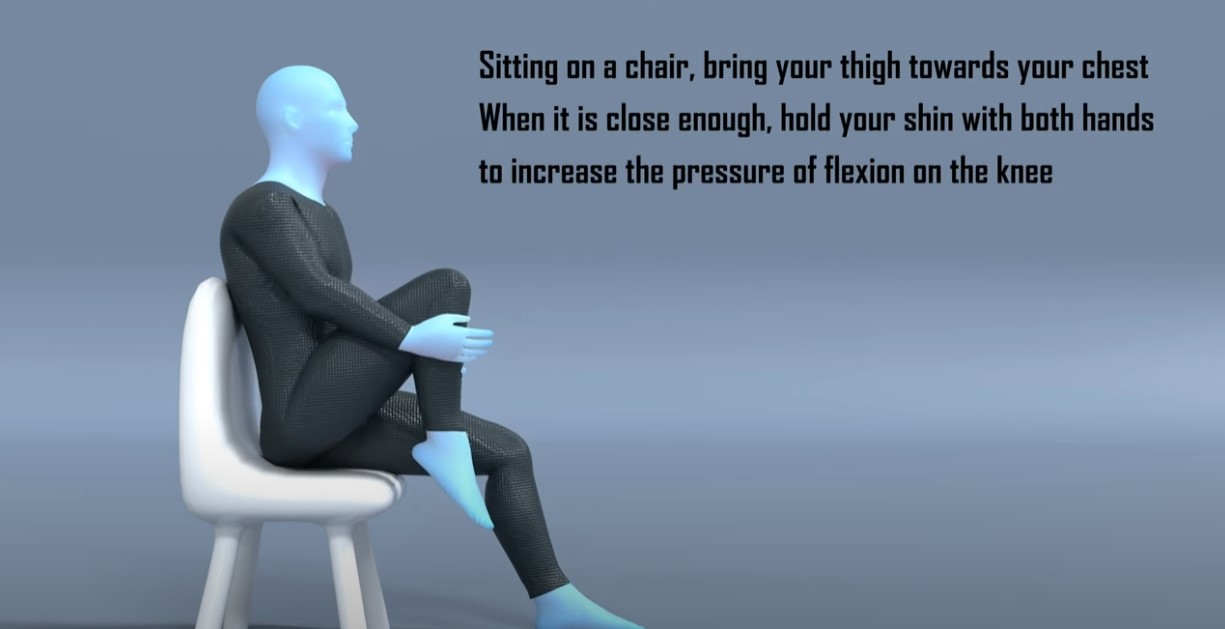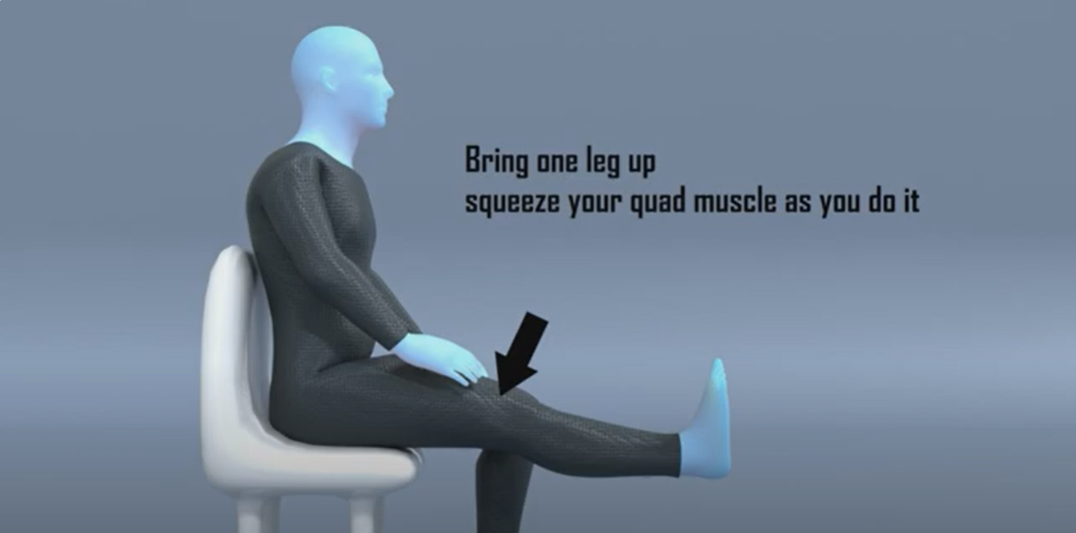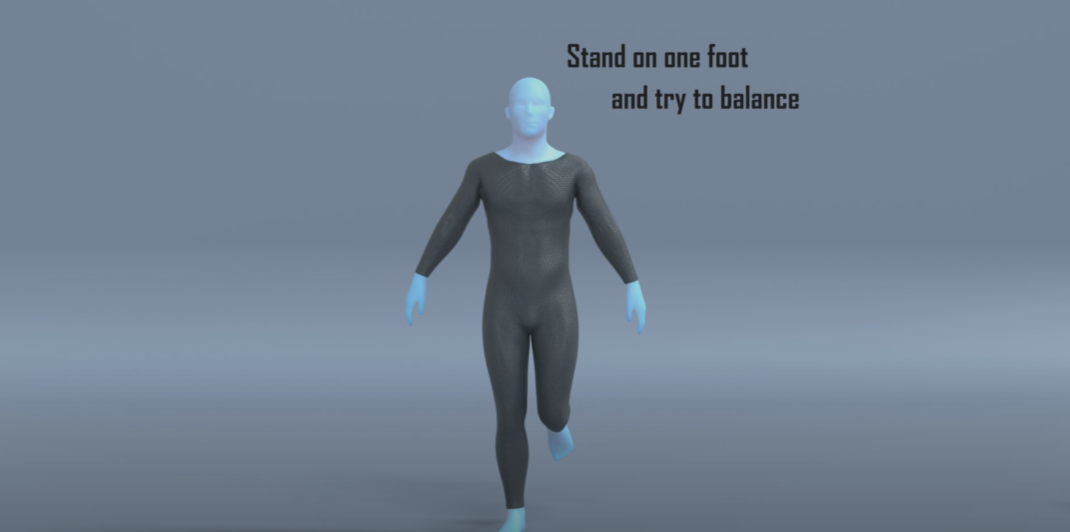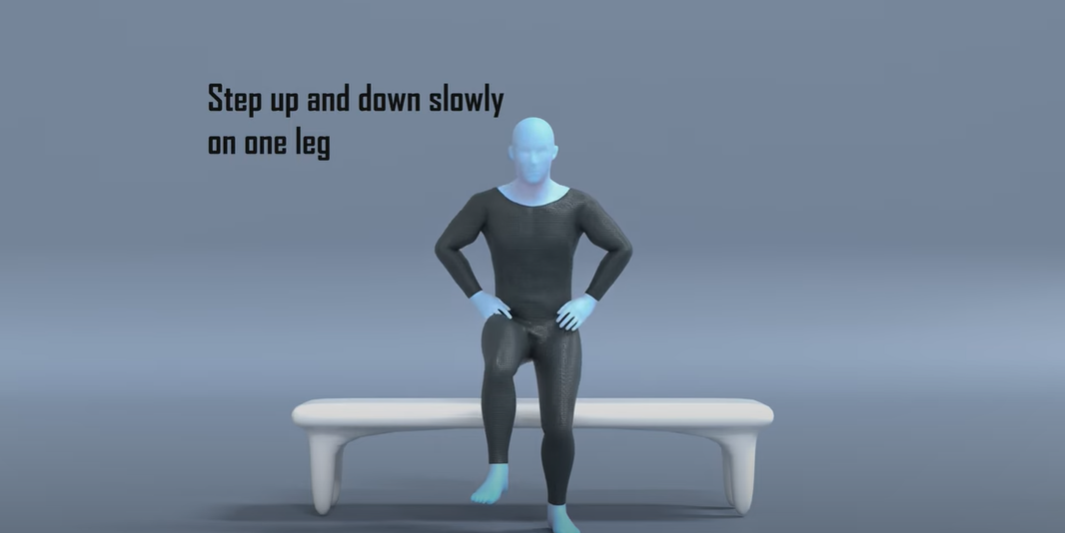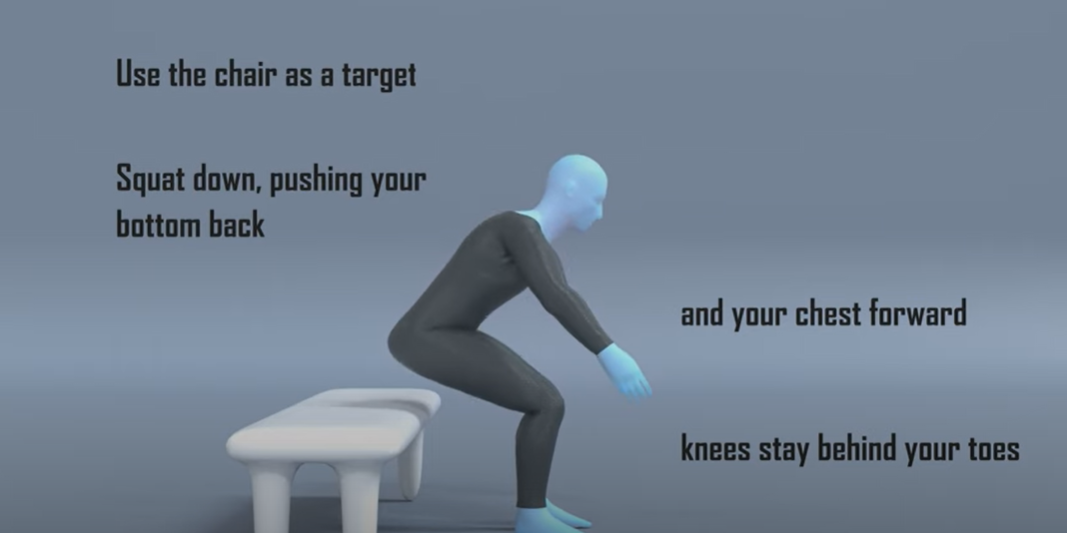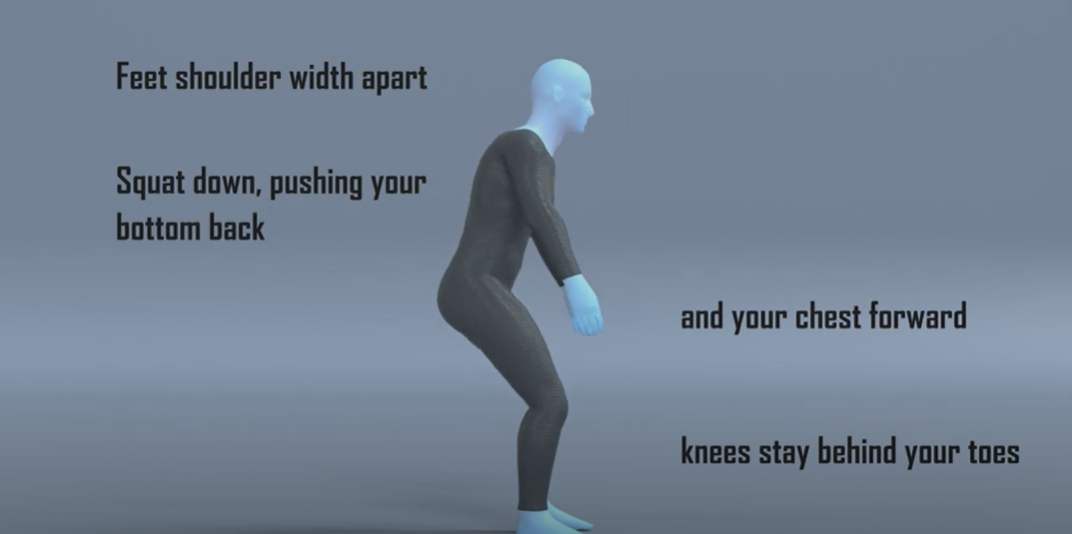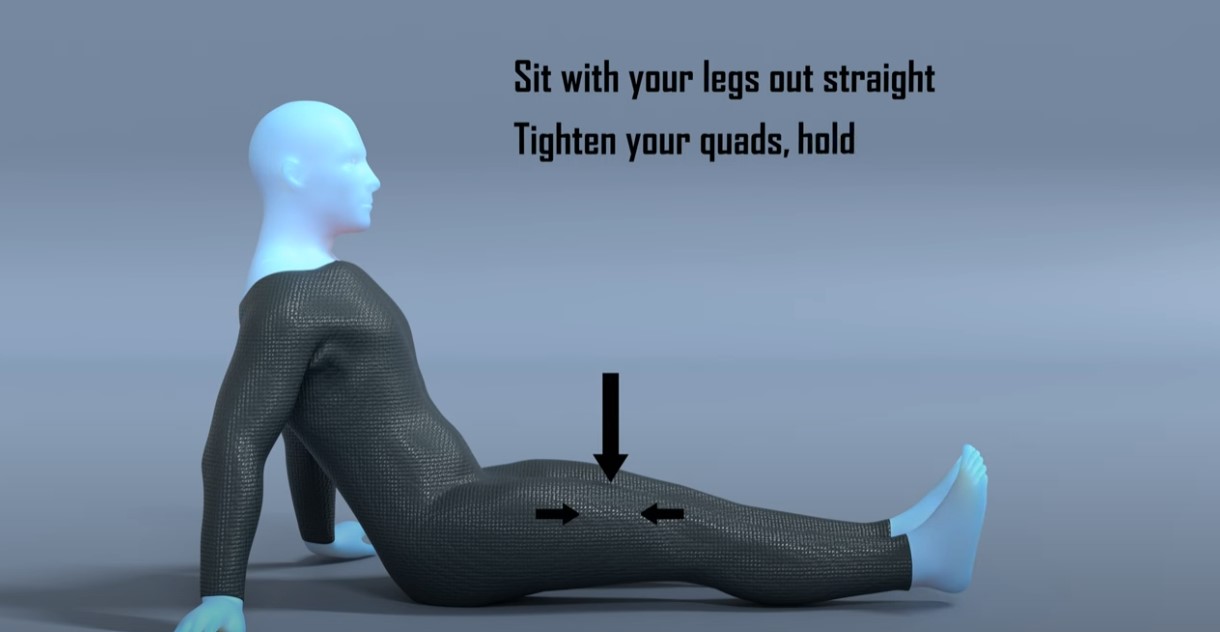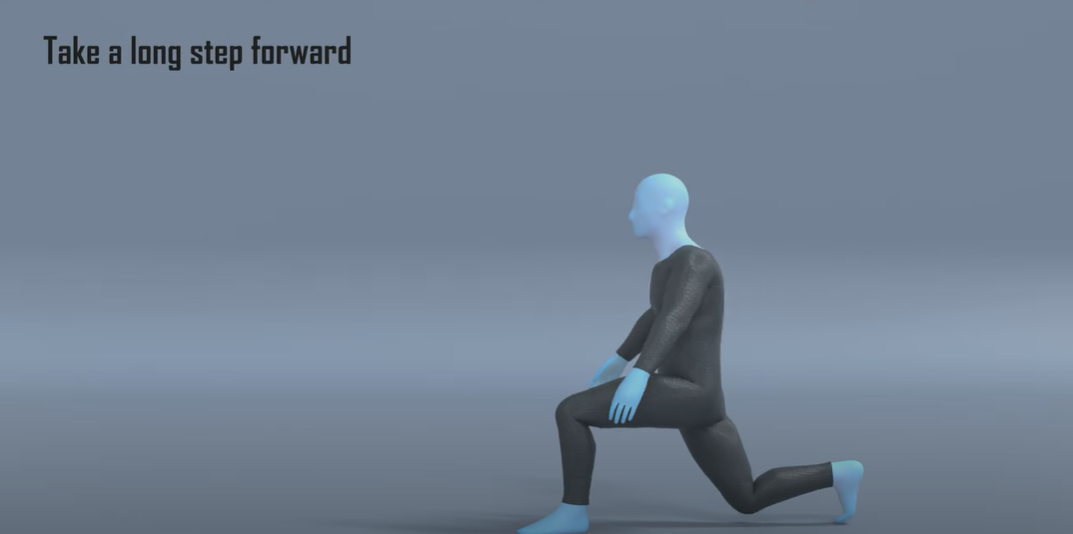
General Programme
Welcome to your free, general rehabilitation programme covering management and treatment options, exercises and equipment that could help. Scroll down to read more or use the sidebar icons to skip ahead.
Use our symptom checker for a more tailored rehabilitation programme.
Knee Pain Management
Click each phase heading to see the progression of your management programme.
This phase is normally the first 24-72 hours after the symptoms started, and the aim is to settle any knee pain you have and make sure we keep the joint moving as much as possible.

RICE
RICE stands for Rest, Ice, Compression and Elevation. These steps are helpful for when you have an injury in the acute phase to help reduce pain and also with the healing process. Depending on your level of function you may find you do not need to apply all of the steps of R.I.C.E. If you are experiencing knee pain with swelling, or even knee pain with no swelling, these steps are a way on how to cure knee pain fast. Even if you have knee pain without injury, these steps can still be helpful.
Rest: You need to reduce the activity level you are performing and let your body have time to heal. The aim here is to pace your activities throughout the day and cut back on anything unnecessary or that particular increases your symptoms.
Ice: This can help reduce the pain you are experiencing and also reduce knee swelling if you develop any, which is particularly helpful after a knee injury. Using some frozen peas wrapped in a damp cloth for 20 minutes will work well here and do this every couple of hours if possible. Do not apply the ice directly to your skin, make sure you have a barrier which is preferably damp, and keep an eye out for any ice burns onto the skin. If you notice this stop immediately.
What can be helpful here is having a specifically designed ice pack you can reuse over and over again. You may still need to have that damp cloth as a barrier with these packs as well.
Compression: This relates to the use of the ice being compressed onto the knee. This can be achieved by simply wrapping a cloth around your joint, but more bespoke equipment offers this ability which would be more comfortable and effective, such as a knee ice pack. You may find that this aspect does not offer relief as the compression is discomforting, and in which case you should stop. Be conscious of any change in sensation in your foot or toes as a sign that this isn’t appropriate for you at this time.
Elevation: Having your foot rested on an object which is raised above your hips, whilst you are laying down, will reduce the amount of swelling in the area. This may help reduce some of the symptoms you are experiencing. Aim here for a similar time frame as applying ice and go for up to 20 minutes. Do not compress and elevate at the same time, as the volume of fluid returning towards your heart may put too much pressure on it. This method is how to reduce knee swelling fast.
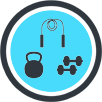
TubiGrip
At this stage using a Tubigrip sleeve over your knee can be helpful to reduce the knee swelling, whether you have some now or further down the line. If you decide to use some tubigrip make sure it is long enough so that you get the full benefit and it is comfortable. Make sure you have time in your day where you are not using the tubigrip, and check that your circulation and sensation into your lower legs aren’t affected. This can be a really easy and cost effective swollen knee treatment option.

Medication
In the initial phase the use of over the counter medication may be an option to offer some knee pain relief. Medications such as paracetamol may allow this acute phase to be more manageable. Please consult your family doctor if you have any concerns with this impacting your current medication, or if any medical history may be impacted by the option of including this medication.
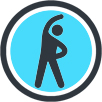
Exercises
These exercises aim to help with blood circulation to the area and to maintain the engagement of the quadricep muscles. With knee pain you may find you are using your leg a lot less, which will result in your quadricep muscles not being activated. Your quadriceps, or quads, are the group of muscles on the front of your thigh which help straighten your knee. It’s really important we keep these muscles engaged and active as much as possible. If you do have any knee clicking during this, as long as there is no knee pain whilst it is clicking, or even the feeling of a knee popping sound but no pain, you are OK to continue. These non-weightbearing beginner exercises can be helpful if you have suffered a twisted knee, or you feel like you have a locked knee, as they promote basic knee mobility.
The main focus of these two simple exercises in this acute phase is to encourage blood flow to the area and engagement of the quadricep muscles.
| Exercise | Frequency | |
| Heel Slides | 12-15 reps x 2 sets | 2 x daily |
| Static Quads | 12-15 reps x 2 sets | 3 x daily |
Some things to consider with the exercises:
- The duration, sets and frequency you perform these is not set in stone, the important point to remember is to do these little and often throughout the day. This is better than doing them for one big chunk as doing them frequently for a shorter period will mean that the benefits are felt for longer throughout the day.
- Neither exercise should be painful but you may get some discomfort on the static quads exercise so either reduce the intensity you are performing this at, or stop it until your symptoms settle further.
This phase would be roughly the first 2 - 6 weeks of your rehab.

Education
Generally with knee pain the focus initially is to make sure you get full knee extension, to ensure you continue activating your quads, to reduce any swelling you are experiencing, and not to perform any activity which is too intense.
Full knee extension is so important with the knee and is often overlooked. Without full knee extension you will struggle to activate your quads properly and will have an altered walking gait. You need to focus on maintaining your quad strength because these muscles may be getting used less and less, so we need to ensure they remain active. Reducing the swelling in the knee will allow for full range of motion and also for the muscles to work properly. Interestingly if there is swelling on the knee this can impact the quads ability to activate. Finally, if you continue to perform activities which cause spikes in your pain and potentially lead to swelling, you will delay the healing process. The important thing to remember and to keep things realistic, is that you may not completely avoid any irritation to the area with general day-to-day activities such as climbing stairs, walking or getting up off a chair. But reducing the particularly high intensity, or prolonged unnecessary activities, whilst pacing your daily activities may help you as your knee is healing. So for example you may find that walking for 5 minutes doesn’t cause any pain but walking on uneven ground for 30 minutes does, so in the early stages avoiding activities which cause spikes in your pain is recommended.
You may find that bending your knee into flexion is irritable initially as you are ultimately compressing the structures in your knee which have suffered damage. Don’t force this but try and keep the movement that you have and slowly increase this over the next few weeks.
There are also a number of non-exercise treatment options which aim to offer support to the knee and hopefully reduce pain. These treatment options can be helpful in the first few weeks if general daily activities can cause irritation but shouldn’t be relied upon to rush through your rehab. Don’t be disheartened if a treatment doesn’t work for you as they don’t work for everyone. Similarly don’t be put off by a treatment option which doesn’t work on the first time you try it, it may be the case if you retrial it in a few weeks time it does offer some relief. The non-exercise treatment options offer good symptom relief but generally won’t completely alleviate discomfort in the area. They work well alongside the exercises we have highlighted and make sure your return to running, walking or sport is progressed gradually.
You can continue with the exercises from phase 1, and apply some other treatment options which may alleviate your symptoms.
If you notice your knee giving way, knee locking, or pain knee clicking, it may be helpful to be seen in person by a medical professional. These are knee ligament injury symptoms which may require different management to what this programme can offer.

Exercises
The aim of these exercises is to introduce some basic range of motion work and also ensure the muscles on the front of your legs continue to be worked. With these exercises start off easy and only increase the intensity each week once any symptoms have settled. You may find initially you want to perform the exercises from Phase 1 as a warm up to these, but over time the benefit of the previous exercises won’t be as great and you should instead focus on these. In this programme we have incorporated the best exercises for knee pain to help you return back to full fitness.
| Exercise | Frequency | |
| Seated knee extension | 12-15 reps x 2 sets | 2 x daily |
| Knee flexion | 12-15 reps x 2 sets | 2 x daily |
| Inner range quads | 12-15 reps x 2 sets | 2 x daily |
Some things to consider with the exercises:
- Start with 12 reps for the exercises before increasing the repetitions. Aim to complete at least 2 consecutive days at each duration before increasing the length of time, but weekly may be more appropriate. Similar to Phase 1 the reps and sets aren’t too important, especially initially, and you will find that over the first few weeks the amount you can perform
- Performing these exercises after you have had a brief walk so the muscles and joints are warm may make it easier.
- The first and third exercises are aiming to strengthen your quad muscles on the front of your thigh, if you suffer knee pain walking downstairs, strengthening this muscle group may act as a knee pain reliever.
- For the second exercise of knee flexion just be mindful that this may initially be uncomfortable. Don’t try and force it but instead slowly increase the range of motion over time. This will hopefully help with any knee pain when bending you are experiencing.
- You may find it helpful to do these exercises in a circuit type fashion, where you do exercise 1 for 1 set, followed by exercise 2 for 1 set, then exercise 3 for 1 set, and then restarting

Strapping
Kinesiology strapping is very popular for many musculoskeletal injuries. The idea is that the tape helps support the muscles and tendons at the point of pain, and therefore causes less pain when doing exercises or general daily activities. The evidence for kinesiology strapping is mixed, and because of that some people find it’s really helpful whereas others find it doesn’t offer them much at all.
If you feel you are struggling to progress, or you feel your rehab is a little stagnant, or that general daily activities are still irritable, then it may be helpful to try this as a knee pain treatment option. Unfortunately there isn’t one way on how to wrap a knee for support, and it will vary between each person.
You can leave the tape on for up to 5-7 days but at any point if it feels hot and itchy take it off straight away. Have a day's rest of no tape before reapplying, and ideally test with a small strip before applying a big amount to you.
If you have pain on the front of your knee, this video shows a general strapping method which you may find helpful. If the pain is on the inside of your knee, this method may be helpful, or if it is on the outside of your knee, this strapping could reduce your pain. If the pain is on the muscles on the back of your thigh, then using this technique could improve things.
It’s likely that used alongside some of the other treatment methods it may offer some knee pain relief, but realistically on their own will not help completely alleviate your pain.

Medication
You should expect to see the usage of medication reduced as you move through this phase. If you always require medication after you perform your exercises or throughout the day it may be the case that the intensity of the exercises and activity is too much and may need to be reduced.

Symptoms
During this phase you should start noticing more times in the day when you are pain free, however it is not uncommon for there to be sharp spikes in pain if you are doing a specific activity. This will improve and the activities which cause irritation should become less. If you continue to perform activities which consistently aggravate your knee, it will continue to cause you pain and perhaps be affecting the healing. You may need to alter the activities in some manner that are causing irritation until you have moved further along in your healing.
If you notice your knee pain is getting worse, completing our free knee pain symptom checker will give a more bespoke programme, offering a knee pain diagnosis, and can even tell you when to see a doctor for knee pain. This symptom checker can help you recognise the signs of a torn meniscus, signs of an ACL tear, highlight the difference between an ACL tear and sprain, whether your tendons are causing your knee pain or arthritis is. There is so much you can do to reduce knee pain, and as there are many knee pain causes, focusing your efforts is always the best option.
In this phase we are looking at between 4 to 12 weeks from when you started your rehab. These timeframes are merely a guide and each case may be slightly different.

Education
Similar to Phase 2 the timelines here are merely a guideline and may vary. You may find that you are able to start this phase before 4 weeks if the symptoms have settled and you are no longer challenged by the exercises in Phase 2, and have no pain on daily activities.
The aim of Phase 3 is to increase the intensity of the rehab and introduce more functional, weight bearing movements to the exercises. During this phase you will find you can perform more day-to-day activities with ease, and towards the end of this stage you may be looking to return to running and sport.
You should at this stage be able to perform the exercises from Phase 2 with ease, and not reliant on any pain medication to perform tasks. You may find that you want to continue some of the non-exercise treatment options from the previous phase which help alleviate your symptoms.
If you find that you are unable to due to pain or instability, it may be helpful to get reviewed by a physiotherapist or family doctor for an assessment. If you would describe your knee pain like toothache still, or knee pain at night while sleeping, it would be helpful to be reviewed face-to-face with a medical professional.

Exercises
You may find that you want to continue the exercises from Phase 2 as they are low level and will still offer benefits, along with acting as a warm up before these new exercises. Realistically if you are progressing well the exercises from Phase 1 will have minimal benefit at this stage.
The aim of these exercises is to increase the intensity of strengthening in the leg and also make sure you have good balance. After a period of reduced activity you would expect your strength in your leg to have reduced, and with potentially a reduction in weight bearing on the affected side initially, you may find your balance has been affected also.
| Exercise | Frequency | |
| Double leg hip bridge | 10-15 reps x 4 sets | 1 x daily |
| Sit to stand or Squats | 8-12 reps x 4 sets | 1 x daily |
| Single leg balance | 30 - 60 seconds x 4 sets | 1 x daily |
Some things to consider with the exercises:
- Similar to the previous phase, start with the lower rep count and complete two days at that level before progressing up. Remember as well to have that 1 minute rest between sets.
- For the double leg hip bridge make sure you are pushing equally with the left and right leg, and vary the distance you have your feet away from your hips. This is a great exercise if you are looking on how to fix a hamstring strain.
- The sit to stand exercise is easier than the squat exercise. If you struggle with the sit to stand exercise, raise the height from which you perform this movement from, this will make it easier to perform. If your balance is your limiting factor here, you can gently hold onto something to give you some support. Your aim should be to have equal weight bearing on both feet, but it may be the case you need to progress on to this. If you are struggling performing the squat then regress to the sit to stand exercise. If you are able to perform the squat and it eventually gets too easy, you can progress this and hold some weight during the movement.
- With the single leg balance exercise start on a stable surface with eyes open, but over time if this becomes too easy you can potentially have your eyes shut, or keep them open and move your hands up and down, or try and perform this exercise on a pillow or towel to offer some instability.
- Any discomfort you experience from these exercises should settle within 30 minutes of completing the exercises and your daily symptoms or irritation should not increase.
- You may find it helpful to do these exercises in a circuit type fashion, where you do exercise 1 for 1 set, followed by exercise 2 for 1 set, then exercise 3 for 1 set, and then restarting.

Foam Roller
A foam roller is used to offer self massage. They are marketed as a way to get similar results of a massage but without the reliance of a masseuse, making it more practical and cheaper for people to use. They are very popular within the fitness industry and with a lot of professional athletes using them within their warm-up and rehab routines. The idea is that similar to massages they increase blood flow to the area and also help with mobility by reducing muscle tension. Unfortunately the evidence on them having an effect on muscle length is minimal, and any change is short term, and the link that they reduce injury or improve rehab times is simply missing. Similar to the strapping treatment, a foam roller can help ease some of your symptoms but may not be effective for everyone. The idea here is that you would use the foam roller to massage your quad, calf and hamstring muscles with the aim to reduce the tension these muscles are putting on your knee, hopefully leading to reduced pain and improved mobility. Do not foam roller directly over your knee as this may be painful and of no benefit.
This will be roughly 12 weeks and onwards following the start of your rehab.

Education
Some people may not need to progress to this phase and the exercises and advice from Phase 3 may be enough for what they need.
If you have a desire to return to running or sport then you should continue with this phase.
Here we focus on performing exercises that are more dynamic and to mimic the demands of running, along with a bias onto the single leg. As we introduce impact work into the rehab programme you need to be conservative in these sessions and build up slowly. For the first week performing these exercises follow the rule that you want to leave each session wanting to do more. You do not want to finish the session and be in pain thinking that you have ‘now worked hard enough’. Starting impact work is a big step and generally what most people find the hardest. You want to be patient and not rush things, undoing all of the good work you have done up until this point.
A simple test if you have access to a leg press machine in a gym, is to see what your 1 rep max leg press is and compare it to your other leg. If you don’t normally use this piece of equipment some guidance from a Physical Trainer in the gym would be advised. What you are aiming to see is that your injured leg should be at 90% strength of your non-injured leg. If your injured leg is much below this number it may not have the strength to cope with the demands of running. Another way to test without a specialist kit is doing a single leg sit to stand test, where you count how many single leg sit to stands you can do on the injured side and compare it to the non-injured side. Similarly you want to be at roughly the same amount of reps for each side. Now these two tests are slightly different in that one will test max strength and the other more muscular endurance, but both will offer some insight depending on your access to equipment.
The second test you want to perform is the single leg hip bridge exercise. On the unaffected side initially perform this exercise for 20 reps and then repeat it on the other side. Was there a difference in fatigue or pain? If so it gives a good indication on what you need to work on. If there was no difference, repeat the test but increase the rep range to 30. You ideally want to be at 90% of effort needed to match the reps or 90% of the reps completed before moving onto any return to running or sport.
The exercises in this phase can help address any loss in single leg strength and will also help improve your single leg control, which will be crucial for any return to running or sport.
At this stage you should be able to perform the exercises from Phase 3 with ease, have no discomfort with daily activities, and have stopped any medication to alleviate symptoms.

Exercises
Using the exercises from Phase 3 will help as a warm up before completing these exercises. Performing 2 sets of the exercises from the previous phase before these will offer you a good base.
| Exercise | Frequency | |
| Single Leg Sit to Stand | 8-12 reps x 4 sets | 3-5 x weekly |
| Walking Lunges | 8-12 reps x 4 sets | 3-5 x weekly |
| Hopping on the spot | 30-60 seconds x 4 sets | 3-5 x weekly |
Some things to consider with the exercises:
- Similar to the previous phase, start with the lower rep count or duration, and complete two days at that level before progressing up. Remember as well to have that 1 minute rest between sets.
- For the single leg sit to stand, if you struggle with this movement you can make it easier by increasing the height of the platform you are trying to do it from.
- You don’t want to perform these on consecutive days, have a rest day between so you can allow time for your body to get used to the extra demand. .
- You may find it helpful to do these exercises in a circuit type fashion, where you do exercise 1 for 1 set, followed by exercise 2 for 1 set, and then restarting. You could also include some of the exercises from the previous phase to increase the length of the circuit.
If you intend to return to running, complete at least 2 weeks of these exercises and then follow our run/walk programme alongside these exercises as you progressively build up. If you normally get knee pain from running, having a slow build up may give time for your body to adapt to this activity. When completing this programme if you notice knee pain after running, perhaps you need to reduce the duration you are running, or spend a few more days or weeks doing the exercises from this phase.

Return to Sport or Activity
As a general rule, try and aim for two pain-free sessions at a reduced duration or intensity before increasing.
For example, if you normally play 60 minutes of tennis, aim to play for 30 minutes in a non-competitive environment for two non-consecutive days.
Having a day's rest between sessions allows you to have appropriate rest and for your body to repair and become stronger.
Once you have found a duration or intensity you can tolerate with no flare up, aim to increase the next session by 10%. This can seem like a slow and conservative process however the research has shown this is the optimum level of increase to avoid an overuse injury. Increasing duration or intensity by more than 10% significantly increases your chance of injury. As you will have been away from your sport for a number of months, you will have lost some of your fitness conditioning in this time and will need to build this up slowly.
Over time you will be able to slowly return to your pre-injury level of activity without regressing back to any acute flare-up.
Pacing
At this stage you should find you can do more day-to-day activities pain free. The temptation here is to go a bit overboard. A nice reminder to pace activities so that you don’t over do it, and that you spread these activities out as much as possible throughout the day.
